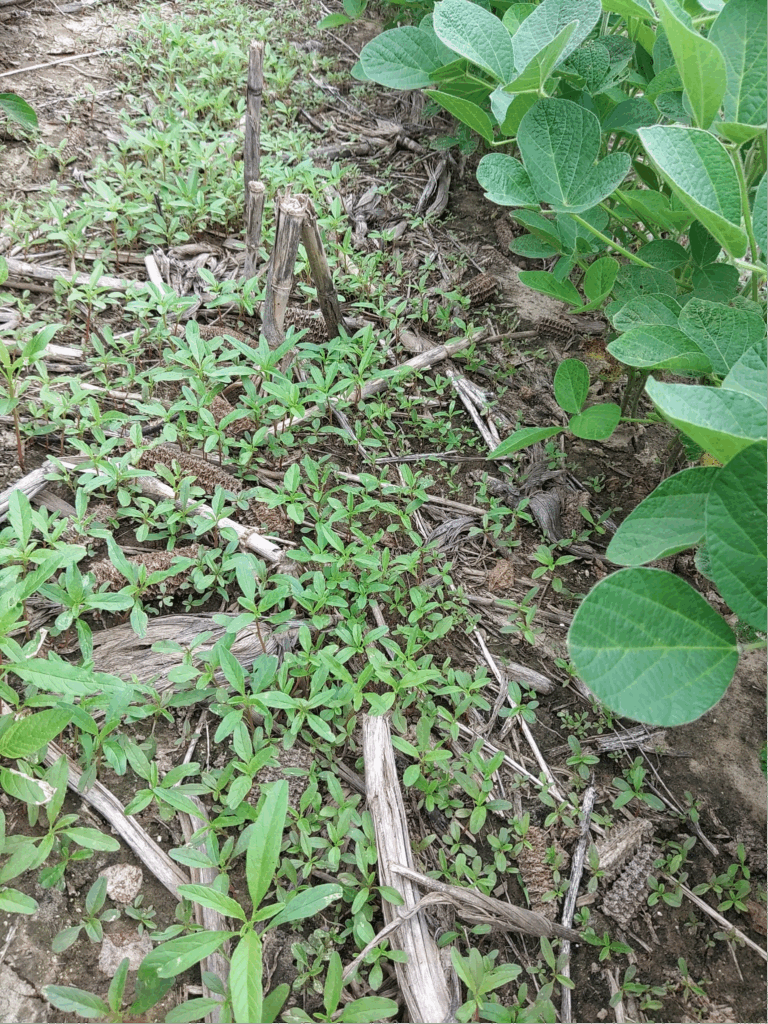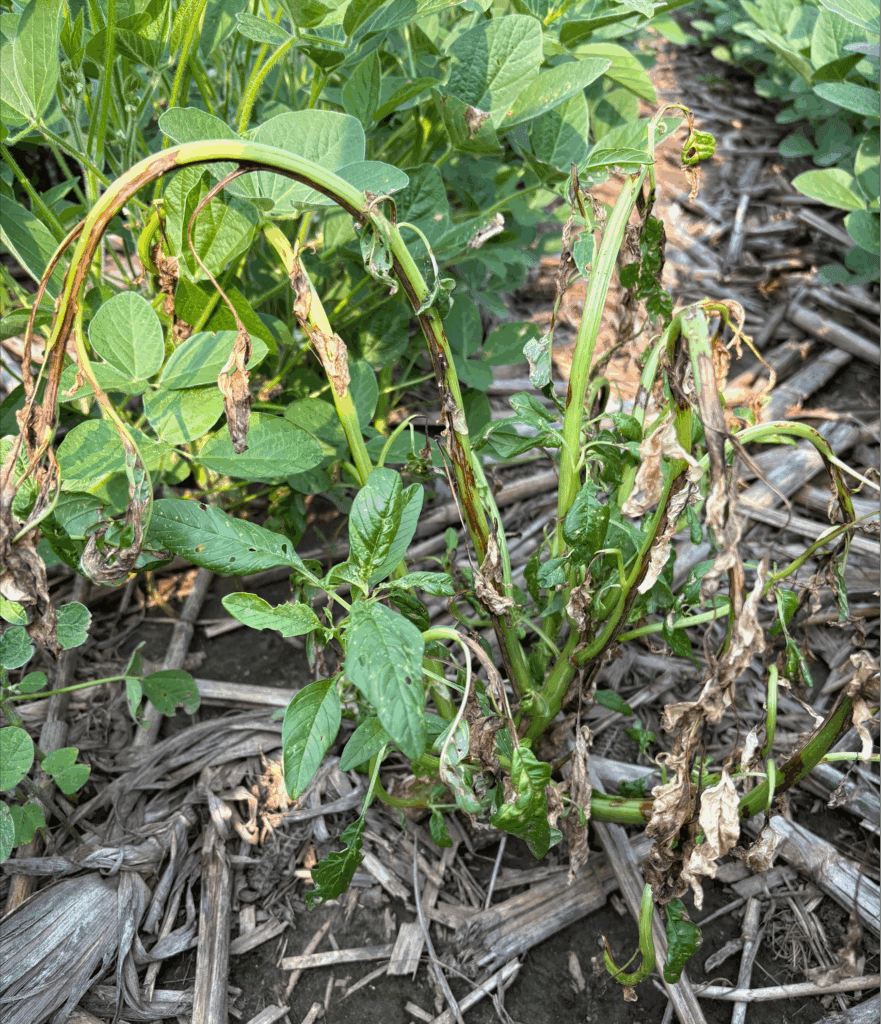
Week of July 28, 2025 Local, professional reports straight from the field,
from all regions serviced by Ag Partners.
Meet this week’s featured agronomists:

Morristown, MN

Wanamingo, MN

Elgin, MN

Ellsworth, WI
Ag Partners Tar Spot Tracker
Check here for your weekly update on where Tar Spot has been reported in the Ag Partners territory:
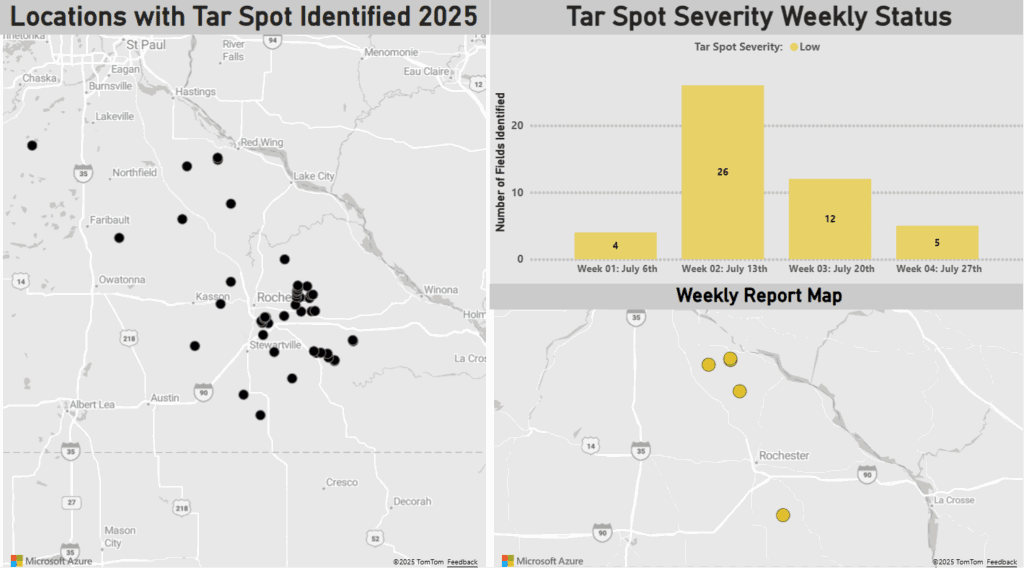
WEST
Belle Plaine – Le Center – Le Sueur – Morristown – Traverse
With the wet and humid weather we’ve been having in our geography, Tar Spot remains a concern. Continuous corn-on-corn and lower leaves of the plant are typically the first to show symptomology in low, wet areas of the field. Ground rigs have started moving this week on soybean fungicide. Most of the soybeans in our region are at or approaching the R3 growth stage. When staging soybeans and determining if it’s the right time to spray, look at the 4th node down from the top of the plant. If the pod is 3/16 of an inch long, the plant is at the R3 stage, which is the ideal for fungicide application. While out scouting the soybeans, keep in mind aphid pressure is starting to pick up on the underside of leaves on the new growth of the plant. Reach out to your local Ag Partners Agronomist for recommendations on additional information and for help with staging your corn and soybeans growth for fungicide application. – Brady
EAST
Goodhue – Kenyon – Lake City – Pine Island – Wanamingo
As we head into August, both corn and soybean crops are looking very promising for high yield potential come harvest. Fungicide on both crops plays a huge role in protecting that yield. We are currently in the heat of applying the fungicide with aerial applications via helicopters, planes and drones. Ground rigs are also in full swing when the ground conditions allow. Tar Spot in corn has been a big concern over the last few years, as it can destroy yields when it sets in heavy. At this point in our area, detection has stayed relatively low, but there is no way of knowing if that will continue. Tar Spot presence alone should not be the sole factor in deciding to spray or not. Another key factor is each individual hybrid’s response to fungicide. Please visit with your agronomist as that can play a huge role in a significant return on investment as well. – Buddy
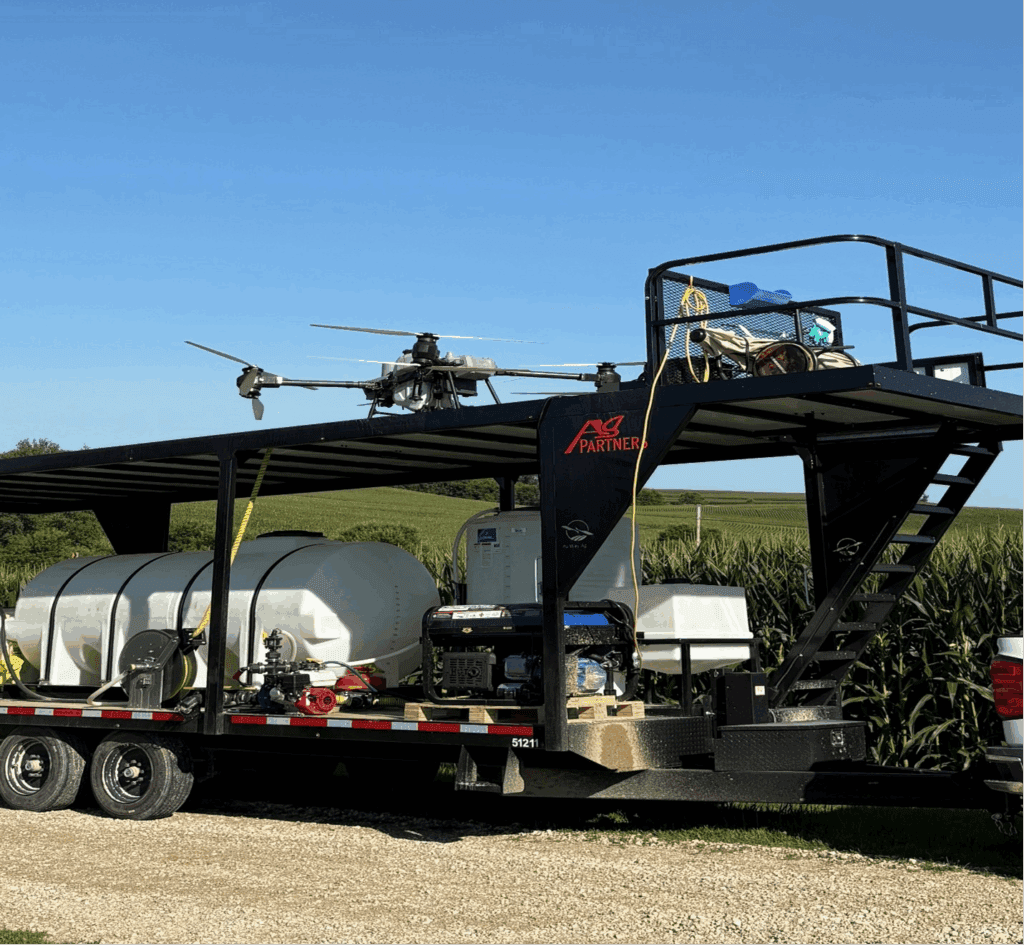
SOUTH
Elgin – Lewiston – Stewartville
July seems to have flown by after the 4th and we’re in the midst of county fair season, which means that fall will be here before we know it! The middle of September will bring corn silage harvest and your Ag Partners Agronomist wants to help you make sure you are getting the most out of your feed. Below are a few late season best management practices for corn silage:
- Fungicide: We are currently busy spraying fungicide and it isn’t only good for grain corn and soybeans! A fungicide application on corn silage can help reduce mycotoxins in the feed, increase tonnage .75-1 ton per acre, and extend the harvest window 7-10 days.
- Walking Fields: It is important to see what is working and what is not in our fields. Your Ag Partners Agronomist can come walk your fields with you to talk hybrids, fertility, weed control, and disease pressure that we have seen in your fields this year. With the changes coming to the corn silage seed market, ask your agronomist to see a silage plot as well to see what options for seed you will have going forward!
- Harvest Moisture: We want to make sure that we are harvesting our corn silage at around 65%-68% moisture. Ag Partners will hold dry down days at some of our eastern locations starting in the beginning of September. Make sure to take advantage of these days to get a better idea of when your harvest window will be.
All crops in the area continue to look great and we’re getting ready to gear up for a fun fall harvest season! Have a good rest of the summer! – Kjersten
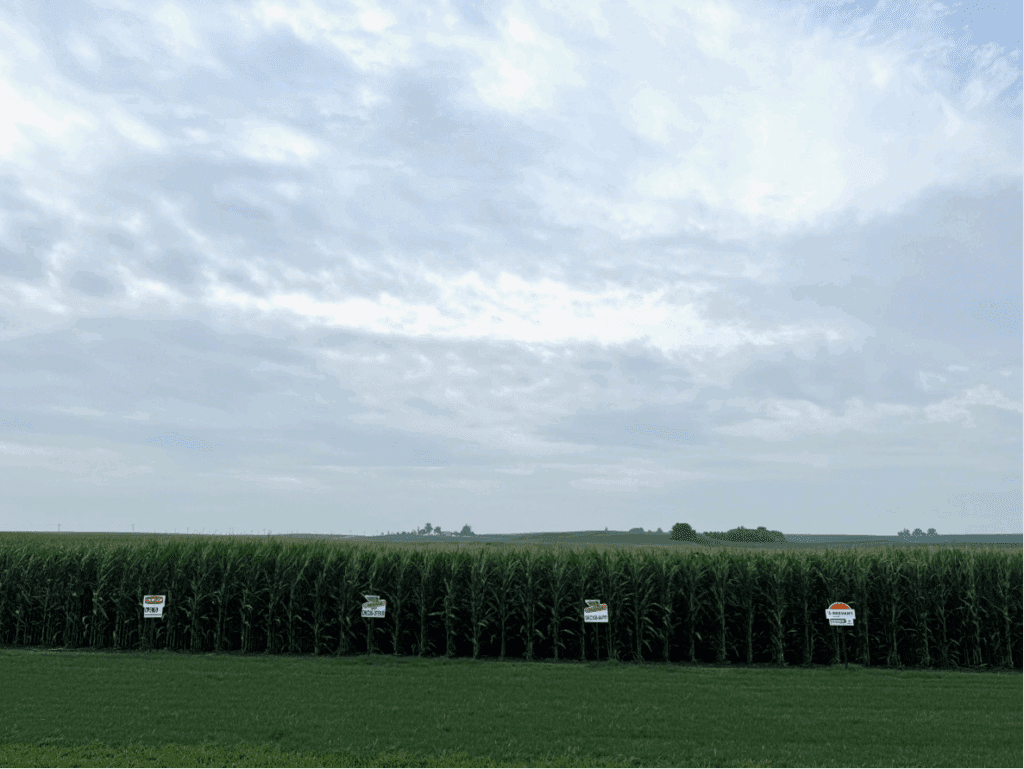
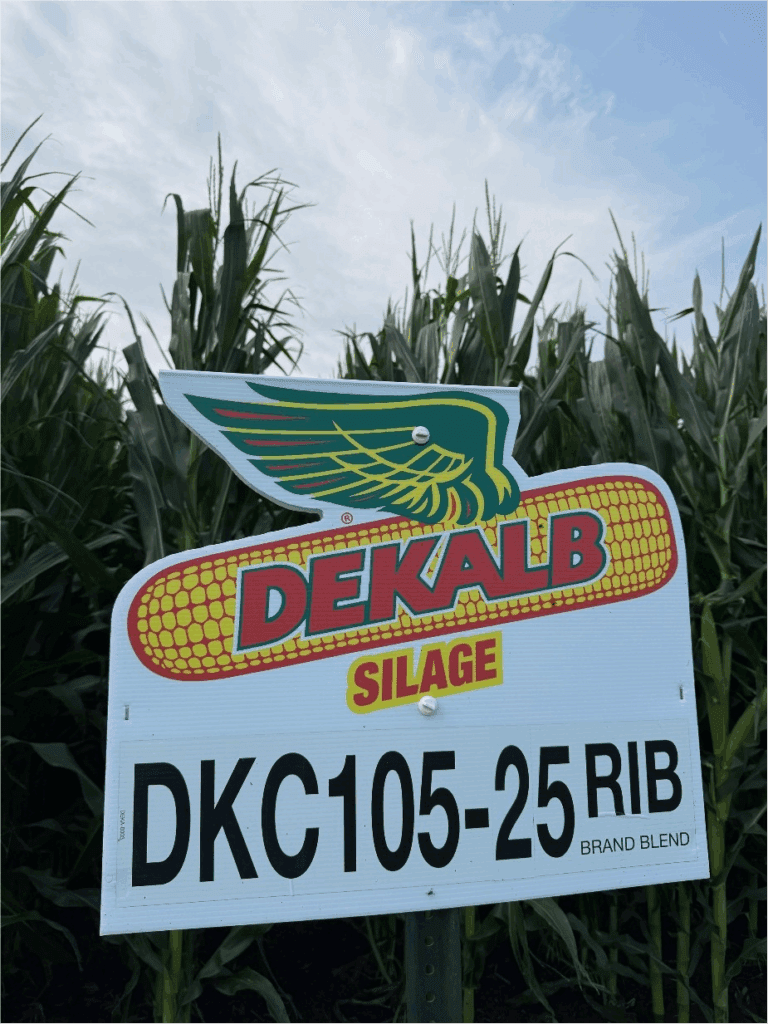
WISCONSIN
Ellsworth
In Western Wisconsin, waterhemp has been a weed that we have been battling for about 10 years. In those 10 years it has felt like we have maintained the upper hand in staying ahead of it, until the summer of 2025 came, and waterhemp has taken back the momentum.
Here’s a few observations from this summer with our fight with this resilient weed:
- It’s easier to kill the seed than a waterhemp plant. Getting a good pre down is critical in the first step against battling waterhemp. A pre, like Tendovo, with multiple modes of actions is ideal. “Spray the seed, not the weed.”
- We need to do a better job of timing our spray passes based on calendar dates, not on how the field looks. The goal should be 25-28 days after the first pass. This summer our beans were slow to get going and when 28 days came up, too often we thought “the fields were still clean and the beans are short, so let’s wait”. Meanwhile, the waterhemp that was germinated went from being 1 inch tall grew to 4 inches in a matter of days.
- Enlist alone on the second pass is simply not effective in our area anymore. We used to save the Liberty and Enlist tank mixes for our horrendously weedy fields. In 2026, Enlist and Liberty together on the second pass will have to be automatic.
Waterhemp escapes in soybeans get all the attention but there are just as many escapes in the corn fields; they are just out of sight-out of mind. Our area will need to adapt to more of a 2-pass program on our corn acres moving forward. Clean soybean fields start with clean corn fields. – Eric
